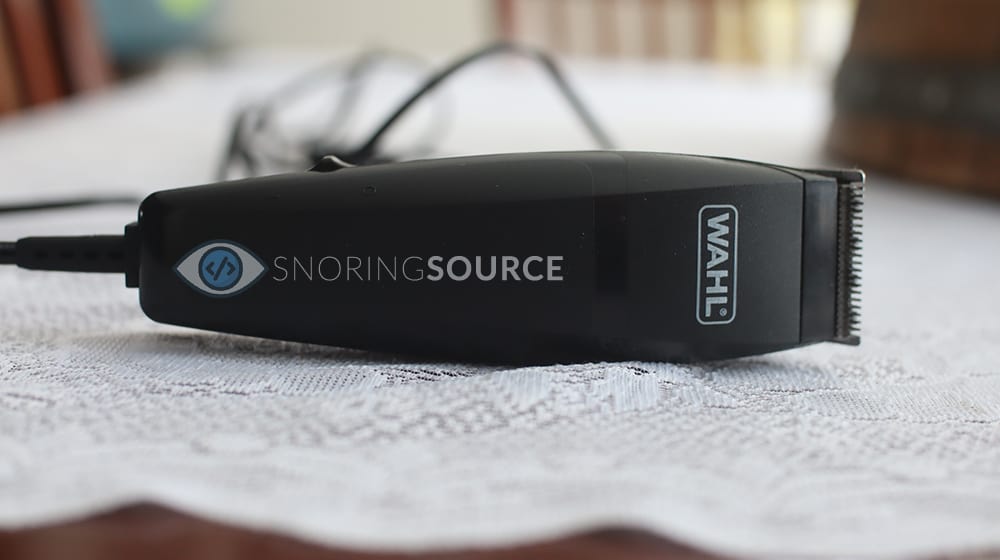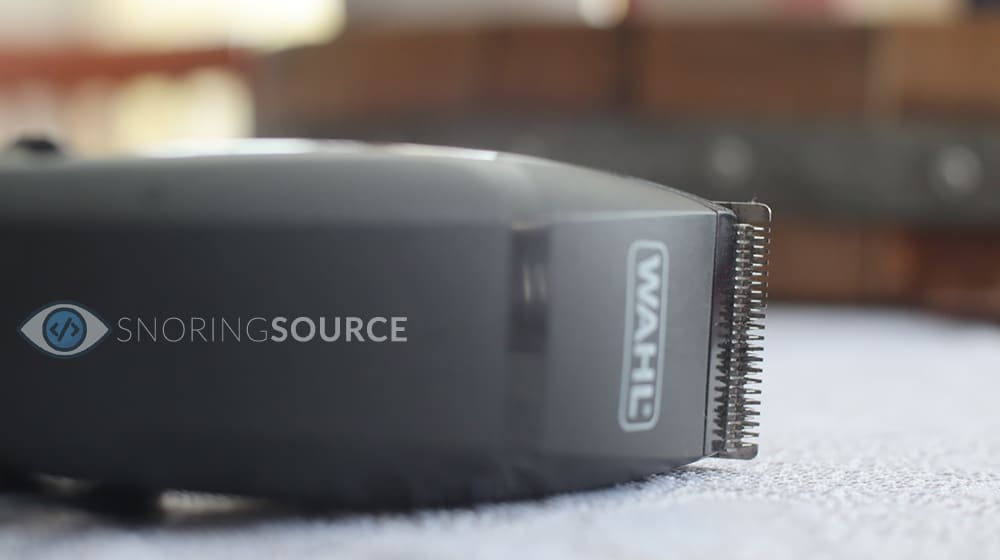Let’s make this clear at the very start: the only “silent” hair clippers you’re ever going to find is a pair of scissors.
Electric hair clippers are going to make noise; They’re powered by a motor, and while engineers can do amazing things to damp the noise a motor creates, they can’t completely eliminate it. Clippers do their work when two pieces of metal contact each other at high speed, and if that speed is lowered to a great degree in order to reduce noise, the clippers won't cut hair.
So there’s no way – at least with our current technology – to make electric hair clippers completely silent. That's not to say that “quiet” clippers don't exist. Just to temper your expectations.
Wahl is a well known brand in grooming industry. These clippers are their professional series clippers. They are incredibly powerful and flexible, and designed for hair stylists who need to produce perfect fades, tapers and other styling techniques.
The 8545 uses an electromagnetic motor, which is the primary reason why it’s noisier than the units using pivot or rotary motors we review below.
Its aluminum metal housing that runs all the way to the bottom of the clippers, though, is why it’s quieter than most clippers you’ll see at the salon. And in terms of performance this is truly a five-star model all the way, delivering 14,000 strokes per minute and featuring adjustable blades with zero-overlap setting, an adjustable taper lever and three cutting guides.
This Oster model runs at a sound level averaging 60db (but louder if you attach one of the guide combs, which can rattle).
As you might guess if you’ve read our discussion below on the three types of clipper motors, these use a pivot motor which is known to produce the least noise of the three. Oster calls the clippers “whisper quiet,” which is an exaggeration since a whisper normally comes in at a much-softer 30db. Even so, these are very quiet for quality hair clippers.
"Quality" is definitely in evidence if you cut your hair with this fast feed model. The blades are adjustable (from sizes 000 to 1) to give you control over the both clippers’ noise and the style of your cut, and although this unit is relatively lightweight and small it can still deliver 14,000 strokes per minute.
The 76023-510 model comes with four comb guides (1/2”, 3/8” 1/4” and a blending comb), too. It’s terrific – and terrifically quiet for a high-quality home hair clipper.
We’re not quite sure how Andis managed to make these rotary-motor clippers so quiet but they’ve been measured at 57db, impressive for a motor which usually runs louder.
It may be because they’ve limited the power of the unit, since it only delivers about 2.900 cutting strokes per minute. Even so, its performance is good (particularly on wet hair); just be aware that the detachable ceramic blades are quite sharp and you have to careful with them. On the flip side, of course, ceramic means they won’t get hot and they’re resistant to corrosion.
The Ceramic BCRG is small, lightweight and comfortable in the hand, and can also accommodate Andis UltraEdge blades if you want to upgrade in that department.
This is a corded model, however you can also upgrade to cordless operation. But if you’re willing to spend even more, Andis makes a similar Supra ZR II cordless model, whose rotary motor offers five-speed operation and not just the one speed of the BCRG.
The HC1091/70 has special, slim blades with rounded tips to provide a danger-free cut for kids, and also comes with a selection of three detachable combs ranging from 1mm to 18mm.
The smallest is perfect for younger children and the rest are good sizes for shorter, grown-up hair. There’s also an ear-contouring comb. This is a corded/cordless model which will run for a long time on an eight-hour charge, and it’s IPX7-rated as fully waterproof.
For a low price, this is a great buy for cutting your kids’ hair – and maybe your own as well.
Philips notes the clippers are "ultra-quiet" which at 55 dbA holds true (equivalent to a household refrigerator humming). For children with sensory issues, these are worthy of consideration.
Our budget pick is pretty much as advertised: virtually indestructible. That’s due in large part to a high-impact polycarbonate casing and rubber grip, minimizing the parts of the clippers which could normally suffer damage if dropped or mishandled.
There’s an added benefit to the construction, too; it muffles much of the sound produced by the super-torque electromagnetic motor which would otherwise be quite noisy. We don’t have a db rating for the HC5855, but by the “ear test” it’s on a par with the Wahl Professional, not bad at all for a high-performing set of clippers.
These hair clippers feature removable precision-ground and washable blades, nine length-adjusting guide combs that range up to 1”, and lots of power for fast and easy hair cutting.
It also comes with a lifetime warranty. This isn’t the quietest set of clippers, but it’s easily the most durable, delivering very good performance at a great price, along with more-than-acceptable noise levels; A number of reviewers compare the sound to a "hum."

We mentioned at the start that you’re never going to find completely silent hair clippers. Here’s something more specific to underscore that fact: the quietest hair clippers on the market are designed for babies, with noise-damping features and a slower, precision motor often powered by batteries.
Even those clippers rarely generate less than 50db of noise, most of it in the form of low-frequency hum and vibration. For context, that’s about the same level of sound generated by a modern dishwasher or an electric fan.
Clippers made for babies’ hair, of course, aren’t powerful enough for most adult use-cases. So don’t let your hopes get too high when buying “quiet” hair clippers; they will still sound like hair clippers.
A realistic goal is to find a model that doesn’t sound like an airplane buzzing around your house when you bring it close to your head. And believe it or not, there are some adult clippers that come pretty close to that 50db benchmark.
There are good reasons that most big lawnmowers and snow-blowers are louder than smaller ones. Their engines are larger, they have to work harder, and they’re largely exposed to the open air.
Manufacturers could make them quieter, but they don’t want to invest the money required to sufficiently damp the noise with soundproof containment structures or bigger mufflers.
Those who make grooming tools like hair clippers have to deal with a similar problem. The bigger and more powerful the clippers’ motors, the more noise and vibration they’ll create. And designing and manufacturing clippers to greatly reduce the sound they produce is expensive; on a relatively-inexpensive product, that extra expense would cut deeply into profits.
So hair clippers that are powerful enough to make short work of an unruly head of hair or a mountain-man beard are bound to be noisy. You can buy less-powerful clippers designed for children which will usually produce less noise, but they may not be enough to get the job done.
The better option is to look for clippers which have the right type of motor for your needs.
You’ll find three different types of motors used in electric hair clippers.
If you’ve read carefully you’ll understand that, unfortunately, quietest isn’t always best. Hair clippers with pivot motors will generate the least noise, but aren’t necessarily the right choice for home use. The most important takeaway here: avoid the cheaper models with universal motors if you want to keep things quiet.

Sadly, you can’t choose “quieter” blades for your hair clipper. Whether your model uses stainless steel, ceramic, titanium or carbon blades, the clipper won’t be more or less noisy.
That’s determined by whether the moving blade is operating smoothly and as designed; we’ll address that shortly. That doesn’t mean clipper blades are all the same, however. For example, carbon blades are self-sharpening and will last a long time, and ceramic blades don’t conduct heat efficiently so they stay cooler during use. But the type of blades will have no bearing on the noise output.
What does matter is whether you’re maintaining your hair clippers properly. If the moving blade falls out of alignment, it may start to make more noise because it’s not contacting the fixed blade as designed. And the number one cause of misaligned blades (other than mistreating the clippers, naturally) is a buildup of hair.
Be sure to clean your clippers thoroughly after each use with a brush, or under a stream of water (if recommended by the manufacturer). If your clippers have adjusters (the clips that snap onto the unit), wash those too.
If the blade is misaligned, you can simply loosen the screws holding it in place in order to put it back where it belongs. You can see the problem easily just by looking straight down the length of the blade.
The other major cause of clipper noise is friction, which is easily avoided by regularly lubricating the blades with clipper oil – if the manufacturer recommends it. Some don’t, so be sure to check before damaging your clippers or voiding their warranty.
Finally, some models make extra noise because their motors aren’t quite in synch with the voltage supplied by the local power company. This is easily adjusted; on Andis and Wahl clippers, for instance, you simply turn the small power screw on the side of the clippers until the noise disappears. Your clippers’ manual or online help section will have more detailed instructions.
If you’re a professional hair stylist, your clients will certainly appreciate a calmer and quieter environment, and may also appreciate being able to carry on a conversation without having to scream over the sound of clippers. The noise also makes some clients tense and anxious.
That problem’s even more of an issue if you use clippers at home to cut your children’s hair. It’s tough enough to keep kids sitting in one place without fidgeting under normal circumstances; add in a loud buzzing sound right next to their head, and good luck trying to keep them calm while you try to trim their hair evenly with a sharp pair of clippers.
Loud clippers can be a problem even if you’re cutting your own hair with the clippers. Noise can reflect off the walls of a small bathroom and become deafening, making some people feel jittery when the task calls for a steady hand.

Snoringsource.com is a participant in the Amazon Services LLC Associates Program, an affiliate advertising program designed to provide a means for website owners to earn advertising fees by advertising and linking to amazon(.com, .co.uk, .ca etc) and any other website that may be affiliated with Amazon Service LLC Associates Program.